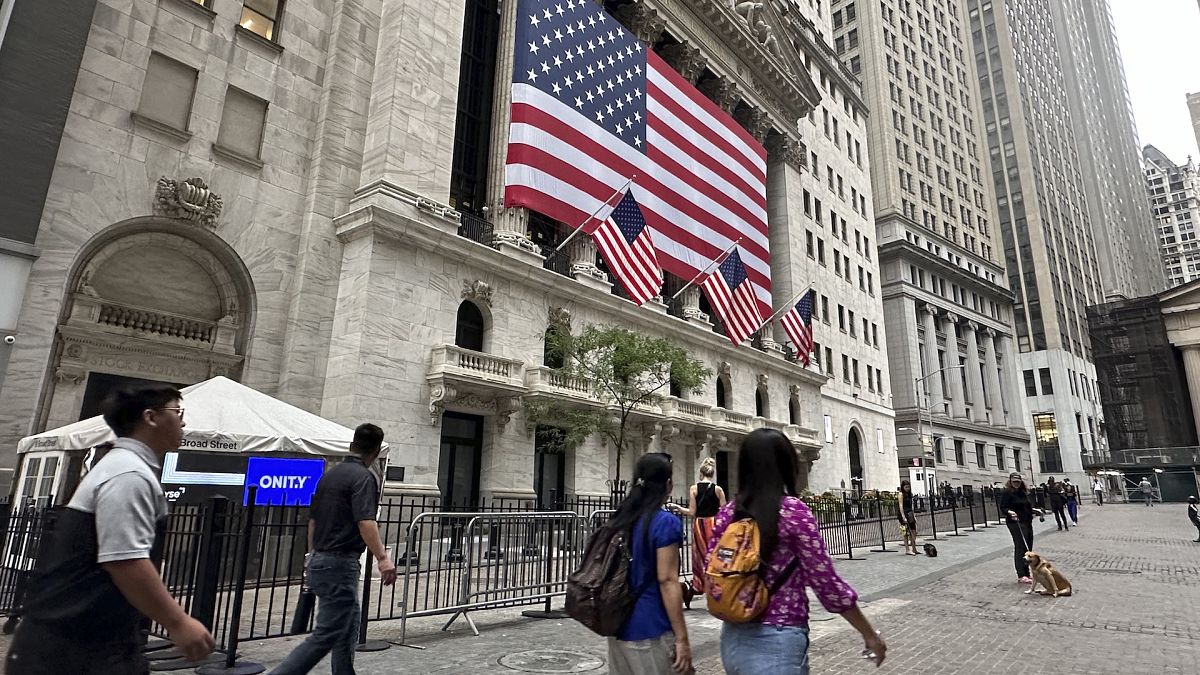What the Fed’s jumbo rate cut means for European and global markets

The Fed’s substantial rate cut could result in a further loosening of global liquidity, prompting a shift in capital across asset classes and stock sectors.
The Federal Reserve has made its first rate cut in four years, taking an aggressive stance with a 0.5% reduction, as anticipated by some analysts.
While there is considerable debate over the Fed’s next steps in its remaining two meetings this year, the bold start to its easing cycle holds substantial implications for European markets and the euro.
The immediate market reaction and implications on the future
Wall Street ended lower on Wednesday, likely due to a “sell the fact” reaction, as the markets had recently already priced in the Fed’s rate cut.
However, risk-on sentiment may be returning, with equities across the Asia-Pacific region rallying on Thursday, and futures pointing to a higher open in both the US and European stock markets.
The euro and the British pound weakened against the US dollar before rebounding, given that the European Central Bank and Bank of England were less dovish than the Fed.
BoE’s decision closely watched
The Bank of England’s rate decision, due later today, will be closely watched as the bank is set to maintain the policy rate at 5%, compared with the Fed’s new range of 4.75% to 5% after the cut.
The Fed’s rate cut marks a turning point for global markets, as a lower interest rate environment indicates more liquidity, which could reduce the pressure on other central banks to maintain higher rates.
The European Central Bank is likely to continue with rate cuts, but the key question is how much and how quickly it will proceed for the rest of the year.
If the ECB’s pace of rate cuts is slower than the Fed’s, the euro could face further downward pressure against the US dollar.
Meanwhile, the dollar’s continued weakness could support commodity prices, which would benefit currencies linked to commodities such as the Australian dollar, the Canadian dollar, and the New Zealand dollar.
In terms of asset classes, cash may become less attractive, as banknotes generate lower yields.
Benefits for different sectors
Consequently, so-called “hot money” could return to markets, flowing into equities, commodities, bonds, and property.
In the stock market, sectors exposed to high debt levels, such as small caps, utilities, and property, are likely to benefit from lower interest rates.
This shift could lead investment funds to rotate from large-cap stocks to smaller companies in search of higher returns.
The trend has already emerged on Wall Street this year and is reflected in Europe. As a result, the Euro Stoxx Small 200 index could begin to outperform the Euro Stoxx 50.
Additionally, commodity-related assets such as growth-sensitive industrial metals and energy, particularly crude oil and copper, are worth watching.
The recent underperformance of mining and energy stocks in Europe could present an opportunity for recovery.
Why did the Fed go big with the first cut?
The first jumbo rate cut signalled that the Federal Reserve had kept rates at elevated levels for too long, falling behind most other central banks.
There appears to be an urgency to reduce interest rates rapidly to prevent further deterioration in the US labour market.
Recent data shows a rising trend in unemployment, which could negatively affect consumer spending and economic growth.
The committee raised its median projection for the unemployment rate to 4.4% by the end of the year, up from the previously forecasted 4%.
In its post-meeting statement, the Fed indicated that risks to employment and inflation are now roughly balanced, and it remains strongly committed to supporting maximum employment.
However, the jumbo rate cut wasn’t driven by rising risks of an economic downturn or recession.
A soft landing for the economy is still considered achievable, according to recent economic data.
Fed Chair Jerome Powell stated: “I don’t see anything in the economy right now that suggests the likelihood of a downturn is elevated.”
The Fed’s aggressive “front-loading” approach to start the easing cycle isn’t expected to set the pace for future decisions, which will be made on a “meeting-by-meeting” basis.
The Fed’s Dot Plot (decision makers estimates for future interest rates) indicates a further 0.5% cut in 2024 and a full percentage cut in 2025.
Related
A New Book Argues That What Happens in Europe Doesn’t…
Remaking the World: European Distinctiveness and the Transformation of Politics, Culture, and the Economy by Jerrold Seigel “No issue in world
Poland plans military training for every adult male amid growing…
Poland’s prime minister, Donald Tusk, has said his government is working on a plan to prepare large-scale military training for every adult male in response t
2025 European Athletics Indoor Championships: Ditaji Kambundji secures women’s 60m…
Switzerland’s Ditaji Kambundji walked away from the 2025 European Athletics Indoor Championships in Apeldoorn on 7 March with much more than her first Europea
Takeaways from the EU’s landmark security summit after Trump said…
BRUSSELS (AP) — European Union leaders are trumpeting their endorsement of a plan to free up hundreds of billions of








